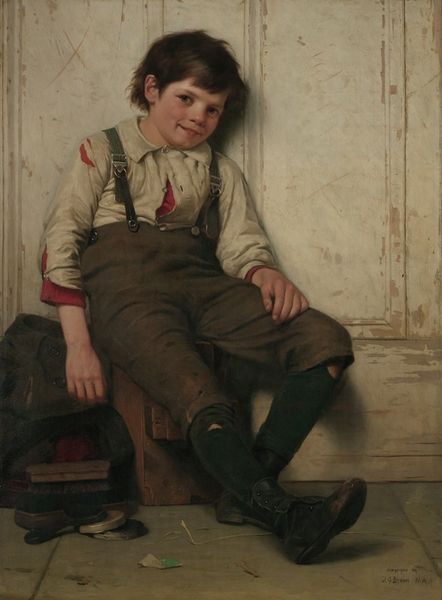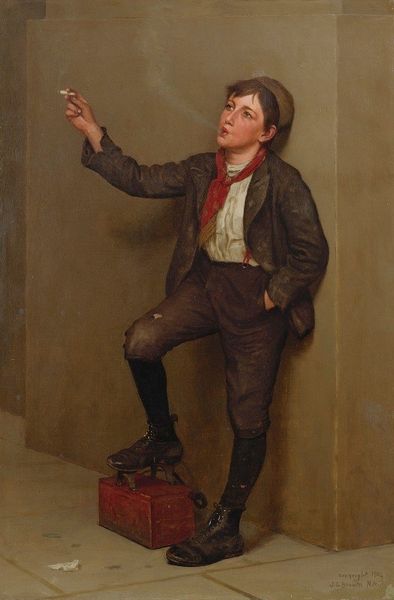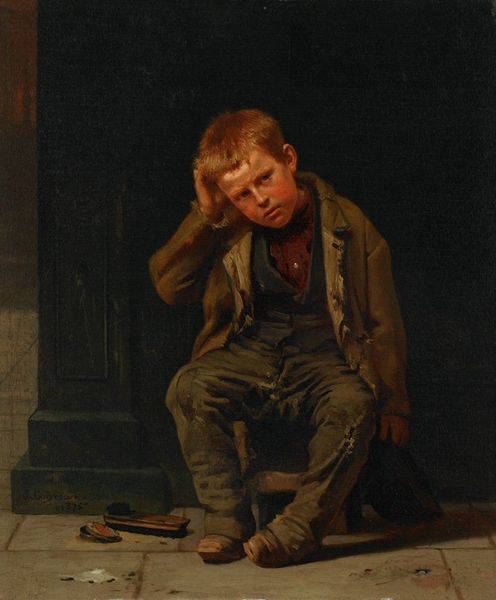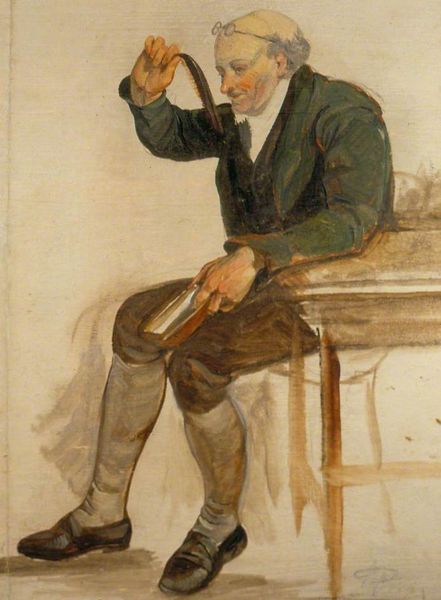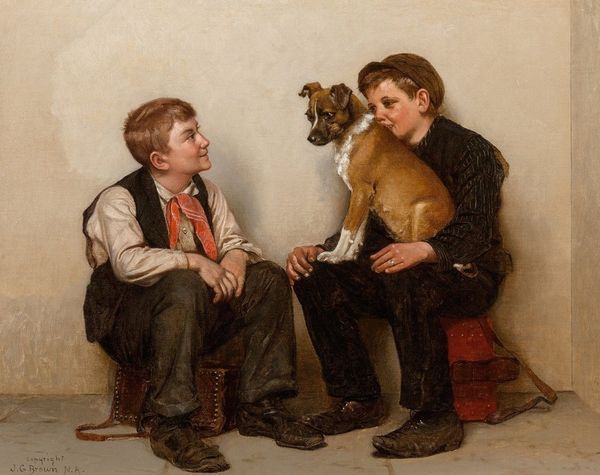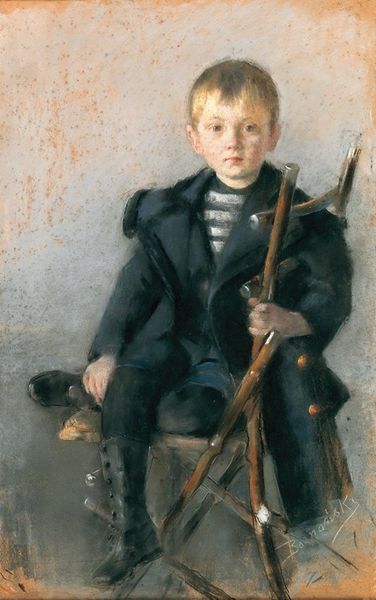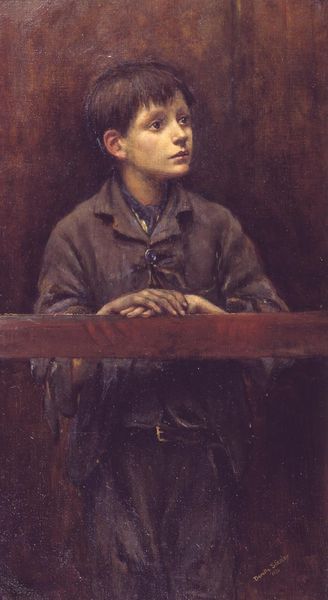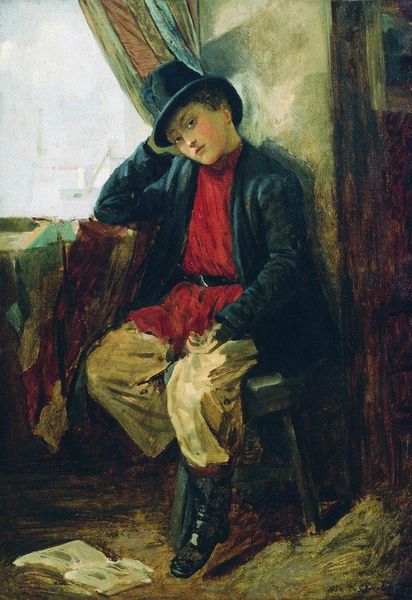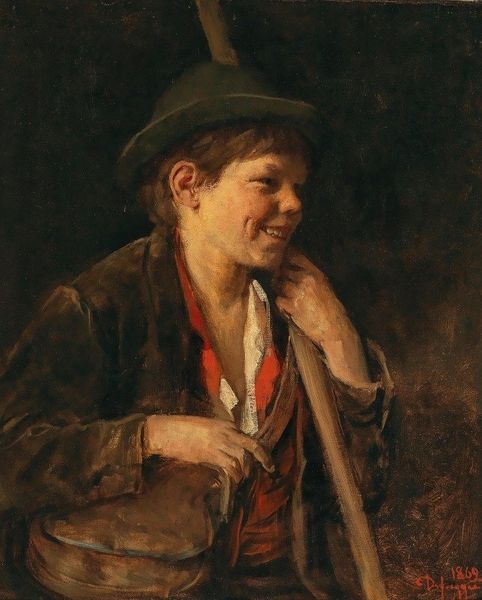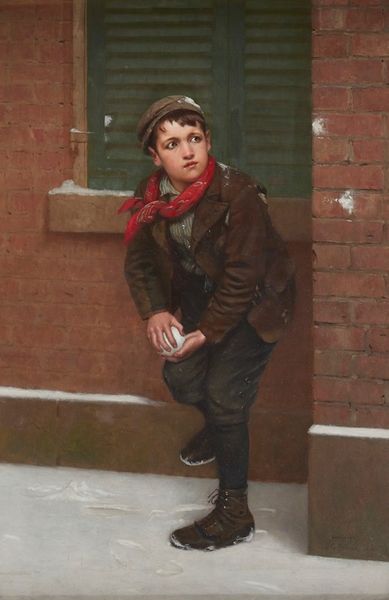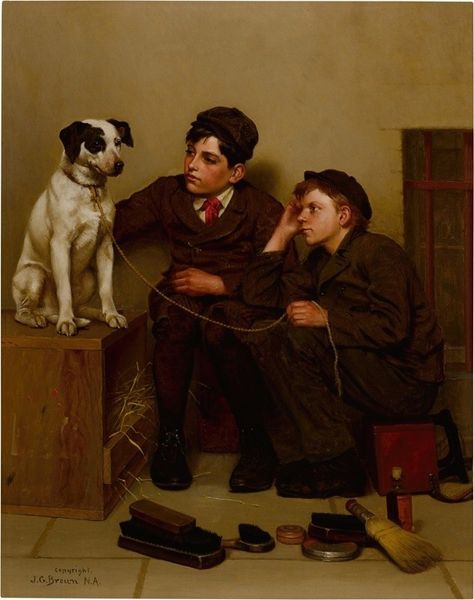
painting, impasto
#
portrait
#
figurative
#
portrait
#
painting
#
portrait subject
#
impasto
#
portrait reference
#
portrait head and shoulder
#
portrait drawing
#
genre-painting
#
facial portrait
#
academic-art
#
portrait art
#
fine art portrait
#
realism
#
celebrity portrait
#
digital portrait
Copyright: Public Domain: Artvee
Editor: This is "A Lull In Business," a painting by John George Brown, dating from around 1890 to 1900. It’s a genre painting, featuring a young boy looking rather bored. I am curious, what do you see when you look at this piece beyond the surface portrayal of a child's boredom? Curator: I see a carefully constructed image that speaks to the romanticization of poverty and labor that was popular in late 19th-century American art. Consider the boy's attire – the patched trousers, the worn boots. Brown's paintings often depicted newsboys, bootblacks, and other working-class children, not necessarily as individuals, but as types. In doing so, what narratives do you think are being reinforced or even erased? Editor: I guess I hadn't really considered the wider context, more just thought about it on the surface level as it is. What you are saying shifts it towards how these paintings could unintentionally solidify societal inequalities. But why would artists choose this subject matter? Curator: Good question. There's an argument to be made that depicting these children was a way for the burgeoning middle and upper classes to assuage their guilt, to 'witness' poverty from a safe distance. There is little doubt the impasto of the piece creates visual interest for the painting in general but doesn't this level of artfulness detract from the harsher realities of child labor? Also, consider what is absent – what political critiques do you see included here? Editor: It’s true, the boy's posture and the title almost normalize his situation. Perhaps because there are no visible political undertones that this can romanticize such realities. That’s a really sobering thought. Curator: Exactly! Thinking about whose stories get told and how they're told is critical. Art like this shows us that even seemingly innocent depictions can be laden with social and political implications, reminding us of art’s role in reflecting and shaping societal views. Editor: Thanks, that really gives me a fresh perspective.
Comments
No comments
Be the first to comment and join the conversation on the ultimate creative platform.
